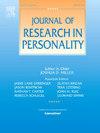谨慎分类:使用混合模型和机器学习的说明性示例
IF 2.6
2区 心理学
Q2 PSYCHOLOGY, SOCIAL
引用次数: 0
摘要
本研究使用模拟数据将潜在混合建模与机器学习分类算法进行比较,以评估将个体分类为发生率相对较低(10%)的不同分类方案的优缺点。人口模型指出,项目反应是由五个潜在因素产生的,这些潜在因素是在五大因素之后形成的。通过改变每个因子的指标数量、因子均值差、因子方差和剩余项目方差来评估10种分类技术,包括传统和贝叶斯潜类分析(LCA)、2类90/10比例、因子混合模型、分类树、条件推理树、进化树、Ward分层聚类、K-means和k -median技术。尽管分类树通常优于其他技术,但这10种技术中没有一种能够达到足够高的诊断决策分类精度。具有解释性和预测性效用的分类方法可能不会对个人决策表现出足够的诊断准确性。本文章由计算机程序翻译,如有差异,请以英文原文为准。
Classify with caution: An illustrative example using mixture models and machine learning
The present study compared latent mixture modeling to machine learning classification algorithms using simulated data to evaluate the strengths and weaknesses of alternative classification options for classifying individuals into a relatively low incidence (10%) personality profile. The population model specified that item responses were generated from five latent factors patterned after the Big Five. The simulation varied the number of indicators per factor, factor mean difference, factor variances, and residual item variances to evaluate ten classification techniques, including traditional and Bayesian latent class analysis (LCA), 2 class 90/10 proportion, and factor mixture models, classification trees, conditional inference trees, evolutionary trees, Ward’s hierarchical clustering, K-means, and K-medians techniques. Although classification trees generally outperformed the other techniques, none of the ten techniques resulted in high enough classification accuracy for diagnostic decision making. Classification methods with explanatory and predictive utility may not exhibit adequate diagnostic accuracy for individual decision making.
求助全文
通过发布文献求助,成功后即可免费获取论文全文。
去求助
来源期刊

Journal of Research in Personality
PSYCHOLOGY, SOCIAL-
CiteScore
5.40
自引率
6.10%
发文量
102
审稿时长
67 days
期刊介绍:
Emphasizing experimental and descriptive research, the Journal of Research in Personality presents articles that examine important issues in the field of personality and in related fields basic to the understanding of personality. The subject matter includes treatments of genetic, physiological, motivational, learning, perceptual, cognitive, and social processes of both normal and abnormal kinds in human and animal subjects. Features: • Papers that present integrated sets of studies that address significant theoretical issues relating to personality. • Theoretical papers and critical reviews of current experimental and methodological interest. • Single, well-designed studies of an innovative nature. • Brief reports, including replication or null result studies of previously reported findings, or a well-designed studies addressing questions of limited scope.
 求助内容:
求助内容: 应助结果提醒方式:
应助结果提醒方式:


